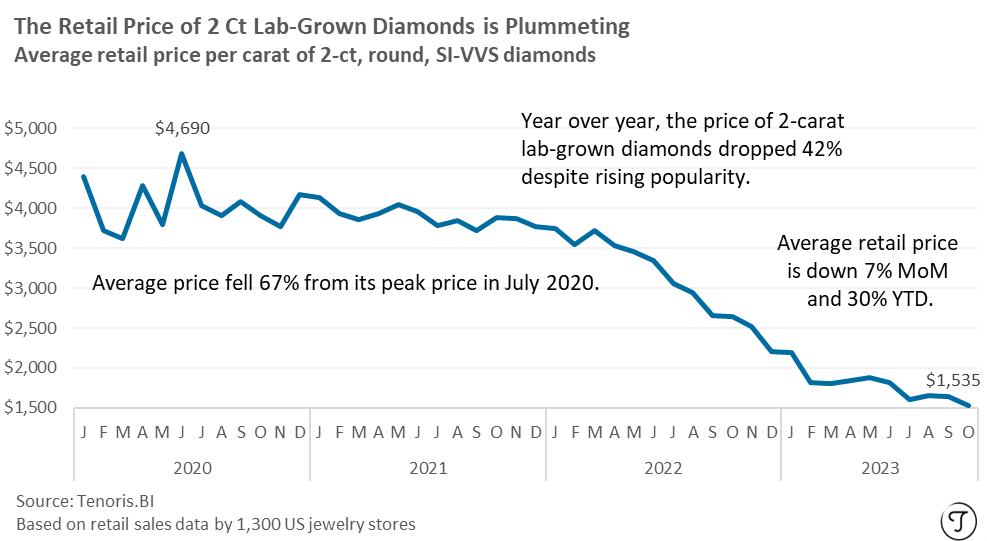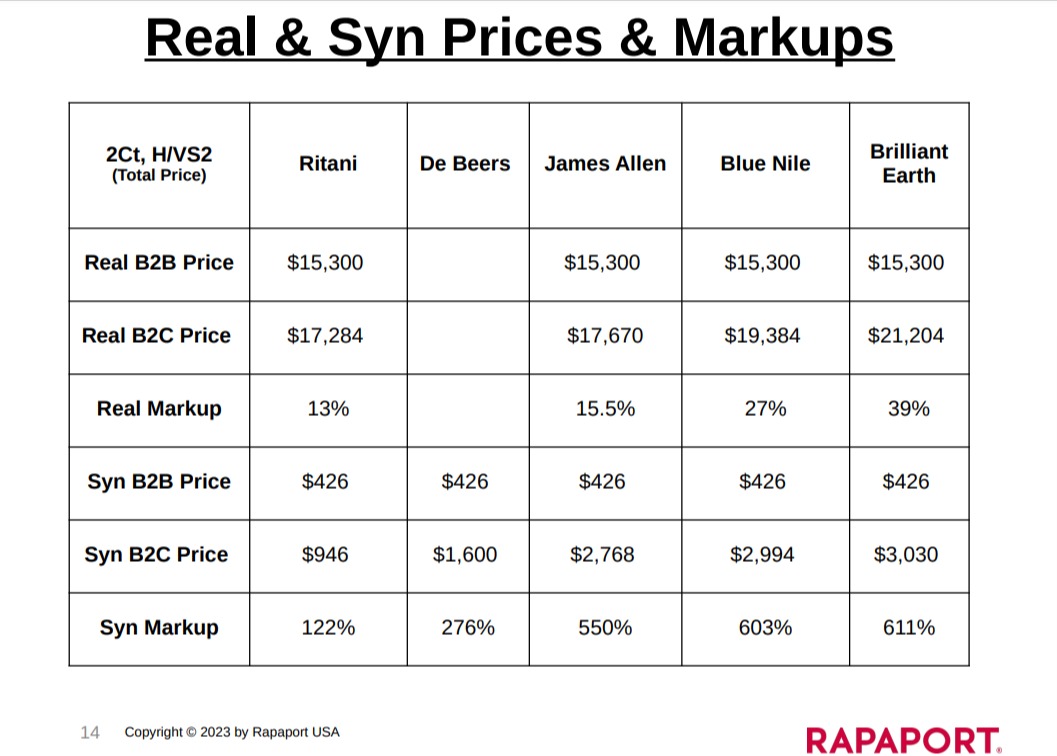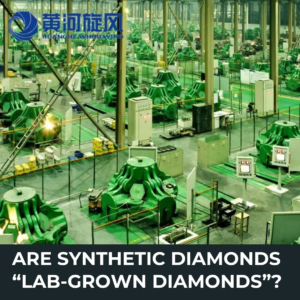on Synthetics
2-min intro to Synthetics
Consumer Alert: Synthetic Diamond Prices Crashing
Nov 21, 2023
Consumers Beware. Synthetic diamond prices are crashing yet some retailers are pricing them high by comparing them to prices for natural diamonds. Consumers think they are getting a good deal, but they are not. Synthetics trade as low as 98% below the Rapaport Price List for natural diamonds.
Synthetic prices are all over the place. Walmart sells a 3 ct., Round, F-G, VS1-VS2, synthetic diamond solitaire ring for $2,975, while Signet’s Blue Nile sells a similar 3.00 ct., Round, G, VS1 synthetic diamond solitaire ring for $8,190. That’s a 275% difference for the same ring.
Some jewelers are pushing synthetic diamonds because they can make huge profit margins. This won’t last because synthetic diamond prices are crashing to hundreds and even tens of dollars per carat. This is because they are available in unlimited supply.
Whether or not to buy a cheap diamond as an engagement ring is a consumer preference. However, consumers who spend thousands of dollars on synthetic diamonds may be seriously overpaying.
Consumers should be aware that synthetic diamonds are not like natural diamonds which are rare and expensive. Synthetic diamonds are not real diamonds and are not a store of value.

Frequently asked Questions
We are receiving many hundreds of responses to this Rapaport Consumer Alert via email and social networks. We will be adding more responses from Martin Rapaport to the most frequent questions below:
I’m not against them.
I love them… for costume jewelry.
With their brilliant sparkle and lower price point, they’re perfect for flashy fashion jewelry that will be enjoyed today and set aside when the next trend arrives.
My problem starts when synthetic diamonds are presented and priced as fine jewelry. I especially don’t like when they are marketed as ideal for engagement rings, or other jewelry that symbolizes lasting love.
True love is precious, synthetic diamonds are cheap (and getting cheaper every day).
Your engagement ring, an heirloom that you and your family will treasure forever (God willing), deserves to be worth more than the dinner you were eating when it was presented to you!
No, I don’t hate synthetic diamonds.
What I do hate is the misinformation surrounding their value. I can’t stand that so many consumers might overpay for them this holiday season.
I abhor the possibility that, very soon, today’s buyers will realize that they’ve been duped by the jewelry industry.
Sellers of synthetic diamonds often present themselves as the champions of the budget-conscious jewelry shopper. “I’ll get you more bling for your buck!”
So far, uninformed consumers have been buying it.
In the business world, we have a more sophisticated understanding of margins and revenue.
Current exorbitant markups on synthetics make them a bad deal for shoppers.
Many argue: “People want synthetics because real diamonds are overpriced.”
The reality is the opposite.
Retail markups on natural diamonds range from 12%-39%. In dazzling contrast, the markup on synthetic diamonds is at least 10 times greater, reaching an astronomical 611%.
This is clearly a bubble. Synthetic prices are crashing. Consumers who pay thousands for overpriced synthetics this holiday season are getting a raw deal.

Synthetic diamonds are mass-manufactured in factories, not laboratories.
Anyone can buy these “hydraulic synthetic diamond machines” on Alibaba and start churning out diamonds. No lab coat needed.

The truth is an inconvenient problem for synthetic marketers. “Factory” or “machine-made diamonds” sounds cheap and mass produced. Definitely not symbolic of romance or true love.
Some marketing devils, so far with the approval of the FTC, renamed them “lab grown diamonds,” to make them sound like they have value. It makes buyers feel good while they’re being misled.
To all who promote “lab-grown diamonds,” I ask: Where’s the lab?
Synthetic diamonds and natural diamonds, we are told, share identical physical properties. Does that mean they are the same?
Absolutely not! One proof is that we can tell them apart.
Synthetic diamonds are not real diamonds.
The Federal Trade Commission warns:
§ 23.24 It is unfair or deceptive to use the word “real,” “genuine,” “natural,” “precious,” “semi-precious,” or similar terms to describe any industry product that is manufactured or produced artificially.”